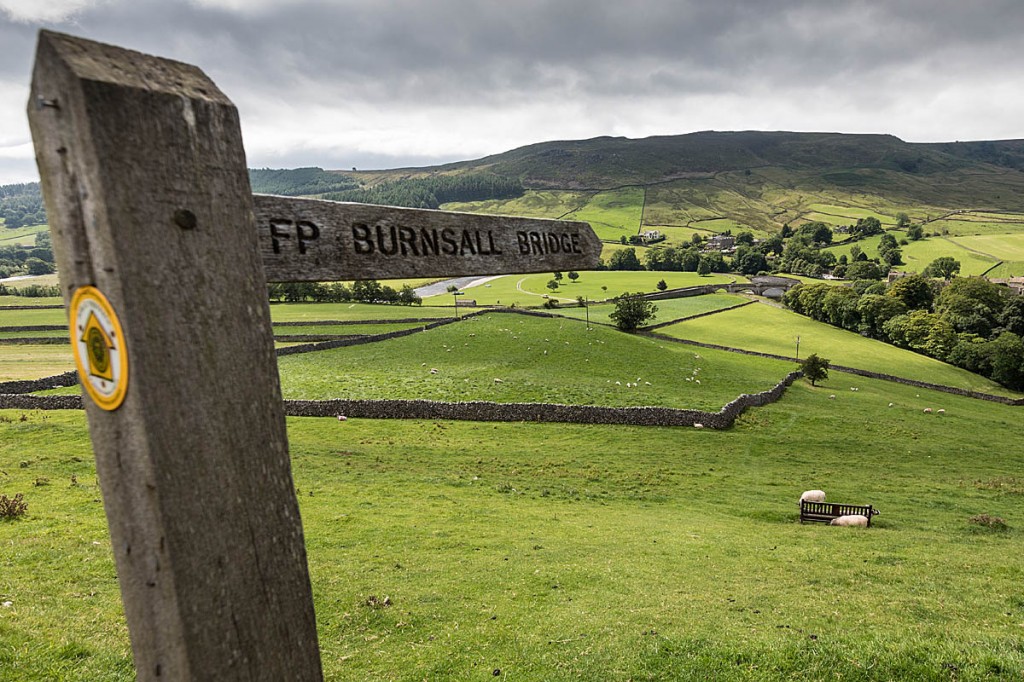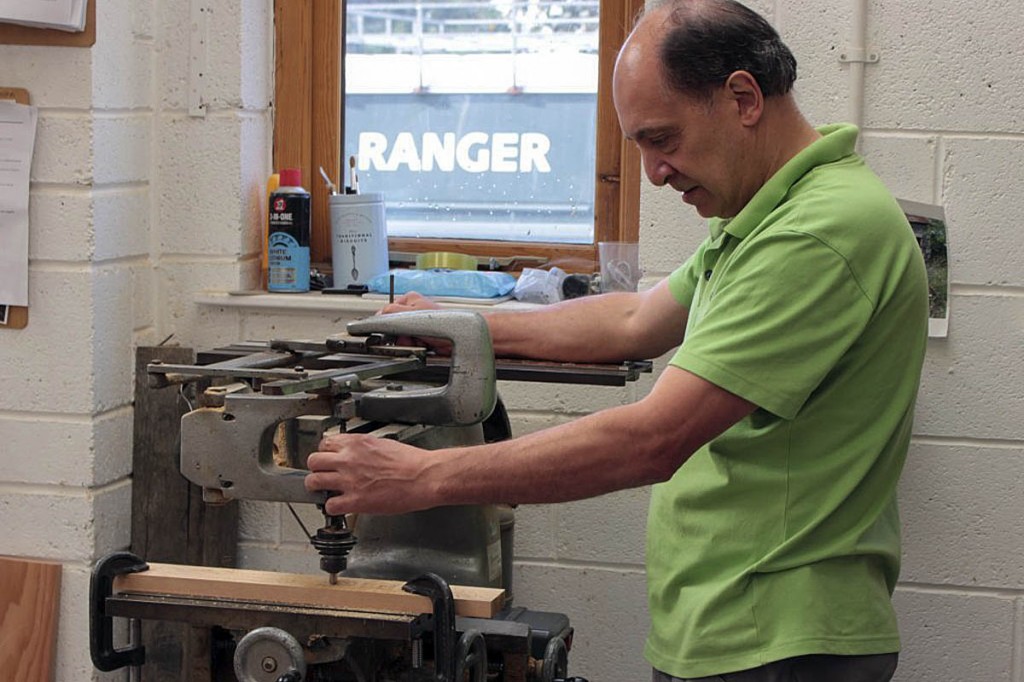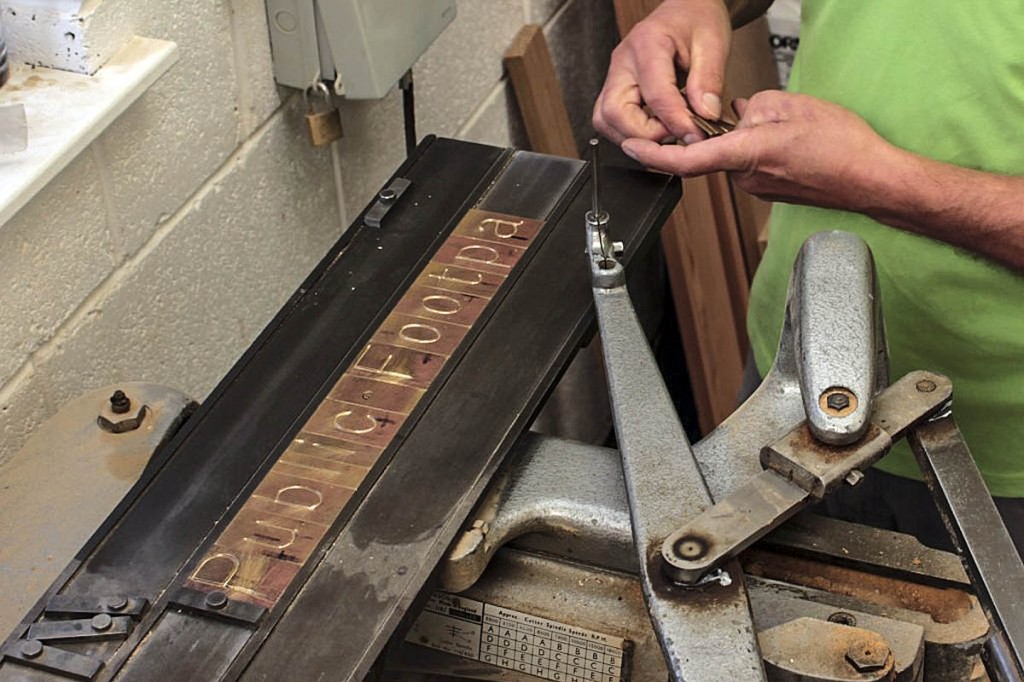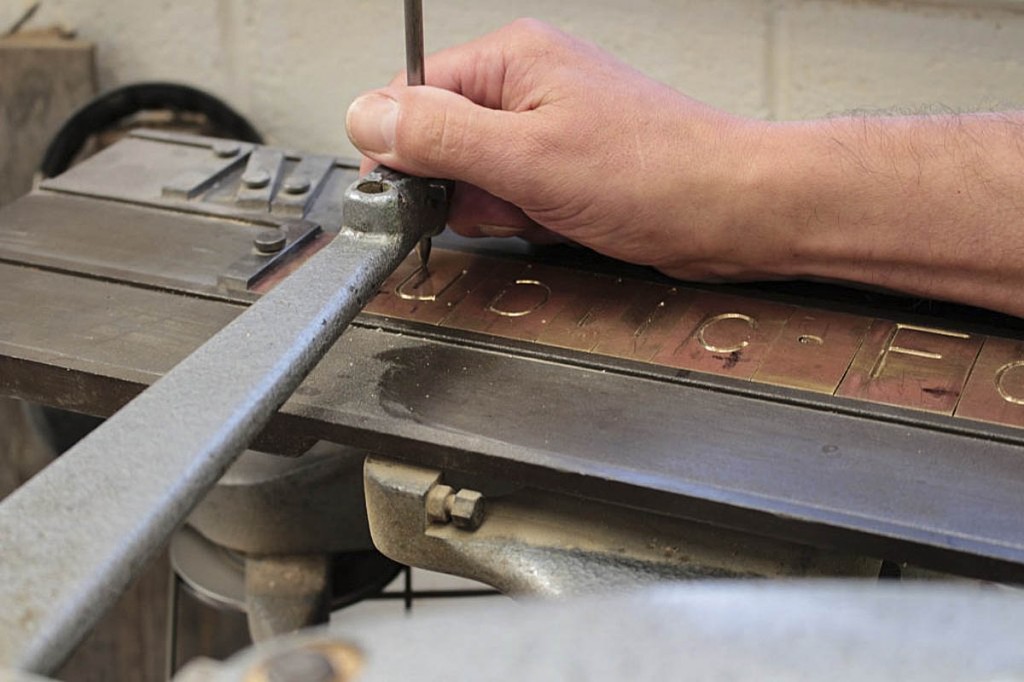
One of more than 3,000 finger posts that have been made for the Yorkshire Dales national park. Photo: Bob Smith/grough
Have you ever stopped and pondered, as you check you’re on the right track, how those ubiquitous wooden finger posts we see throughout the countryside are produced?
They point the way for many a walker and other outdoor enthusiasts.
With their clear lettering, they can be a reassuring sight if you’re feeling navigationally challenged.
Despite the arrival of computer-controlled equipment, one national park is happily using a 44-year-old machine to create between 500 and 600 finger posts each year.
Yorkshire Dales National Park Authority maintenance officer Richard Pennington has looked after the Taylor-Hobson pantograph for the past 27 years. It was bought by the authority’s precursor, the national park committee of North Yorkshire County Council for £1,000 in 1974.
The vintage machine has just been given a clean bill of health to continue operating after an in-service inspection test. It has been used to make all 3,775 of the finger posts in the Yorkshire Dales park.
Mr Pennington said: “The pantograph has a lot of history attached to it now. It’s doing quite well – it’ll probably go on for ever.”
The condition of every stile, gate and fingerpost in the park is assessed annually. If any posts need replacing, rangers contact Mr Pennington with their requirements.
At his Grassington workshop, the first step for a new sign is to select the letters, or brass blanks. The fount used on the signs, or ‘copy’ as it is called, is ‘A Style Line’. The brass blanks are then laid on a bench and measured.
The lettering then needs to be scaled to fit the finger post in question. Mr Pennington sets the pantograph to produce the correct length and then loads the blanks into the copy table of the machine.
The sawn length of wood, oak or douglas fir, is clamped into the cutting bed of the pantograph. Both hands are needed to operate the pantograph. With one hand, Mr Pennington moves a metal stylus along the brass blanks. This in turn moves the routing blade arm.
He uses his left hand to raise and lower the cutter by turning a knurled handwheel, keeping the routing arm steady.
Once engraved, the end of the finger is sawn into a pointer before a sander is used to put a chamfer on the wooden sign.
He then routs a rectangular slot in the upright post for the finger to be placed in.
Mr Pennington said: “Fingerposts do not last long. It’s the section of post near the ground that rots. I am now replacing signs that I did 10 or 12 years ago.”
Typically, he will make about 200 finger posts and a further 400 signs each year.
So next time you follow the line from one of his creations, you can be reassured a little bit of industrial history has gone into its making.


